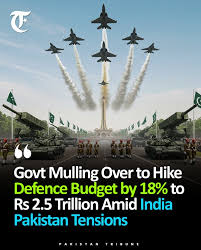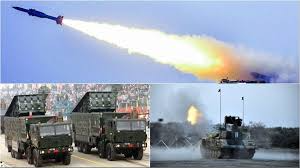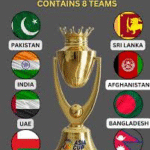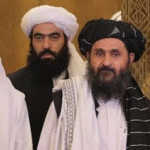Description of Defence Tension Escalates
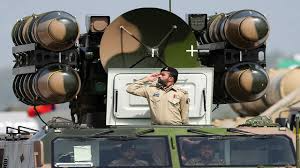
In recent months, Defence Tension Escalates has witnessed a noticeable escalation in defence tensions among major powers, reshaping the geopolitical landscape and sparking concerns about a potential new arms race. The growing atmosphere of mistrust, territorial disputes, and military posturing has placed global stability under renewed pressure. As nations modernize their armed forces and strengthen alliances, the international community faces a defining moment — one that could determine whether the future is marked by cooperation or confrontation.
1. The Rising Tide of Global Military Rivalries
The post-pandemic era has seen a significant shift in defence priorities. Nations across the globe are reassessing their security strategies in response to emerging threats — from cyber warfare and border conflicts to shifting political alliances.
Several countries are expanding their defence budgets, developing advanced weapon systems, and reinforcing regional partnerships. This trend reflects a growing sense of strategic competition, particularly between global powers and regional actors seeking greater influence.
The rise in territorial disputes, naval patrols, and airspace confrontations indicates that the balance of power is becoming increasingly fragile. What was once political tension has now evolved into a full-scale race for technological and military dominance.
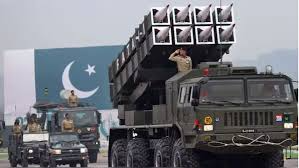
2. The Drivers Behind the Escalation
The escalation in defence tensions is not rooted in a single cause — it’s the result of a complex web of economic, strategic, and ideological factors.
a. Territorial and Maritime Disputes
Border and maritime disputes remain at the core of many confrontations. Nations are strengthening their defences around strategic regions to protect trade routes, natural resources, and sovereignty.
b. Technological Competition
The race for military innovation — including hypersonic missiles, cyber warfare tools, and artificial intelligence-driven systems — has intensified. Modern warfare is no longer defined solely by troop strength but by data, automation, and precision.
c. Alliance Politics
As old alliances shift and new ones form, global power blocs are emerging once again. Mutual defence pacts, regional exercises, and strategic cooperation agreements are reshaping the world’s military map.
d. Resource and Energy Security
With global demand for energy and rare minerals on the rise, competition over resource control has added another layer of friction.
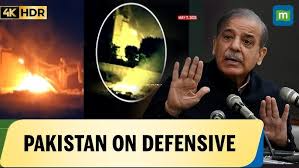
3. Regional Flashpoints of Tension
Across the world, several regions have become hotspots of defence escalation:
-
Asia-Pacific: Territorial disputes, naval exercises, and military drills in this region have increased dramatically.
-
Eastern Europe: Continued security challenges and alliance commitments have kept the region on alert.
-
Middle East: Long-standing rivalries, proxy conflicts, and shifting alliances continue to affect peace efforts.
-
Cyber Domain: Nations are investing heavily in cyber-defence capabilities as digital espionage and infrastructure attacks become common.
Each of these areas reflects a broader pattern — the global military landscape is more interconnected, more complex, and more volatile than ever. Newsmax
4. The Technological Transformation of Defence
The modern battlefield is undergoing a technological revolution. Artificial intelligence, satellite surveillance, drones, and automated defence systems have redefined how wars are fought and prevented.
Countries are investing billions in next-generation weaponry designed to enhance deterrence while reducing the human element in combat. While this may improve precision, it also increases the risk of miscalculations or unintended escalations if automated systems make errors in real-time situations.
5. Economic Impact of Growing Defence Expenditure
As defence tensions escalate, the financial burden on nations grows heavier. Many countries are diverting significant resources from social welfare and infrastructure toward military modernization.
While this strengthens national security, it can also Strain Economies, widen inequality, and increase public discontent. The global arms industry, however, continues to thrive — with rising demand for advanced aircraft, missile systems, and cyber technologies fueling economic competition between defence manufacturers.
6. Diplomacy Under Pressure
Diplomacy remains the world’s strongest safeguard against military escalation — yet it faces immense challenges. Mutual distrust, propaganda, and political polarization often undermine negotiations.
To restore stability, nations must reinvest in dialogue and confidence-building measures. Transparent communication, arms control agreements, and crisis hotlines can prevent misunderstandings from spiraling into open conflict.
International organizations and neutral states can also play a key role in facilitating talks, encouraging de-escalation, and promoting cooperation on shared global issues such as climate security and counterterrorism.
7. The Role of Media and Public Perception
In today’s digital age, information spreads faster than diplomacy. Media coverage and social media discourse can amplify narratives of fear and aggression. This makes responsible journalism and fact-based reporting essential in reducing panic and promoting a balanced understanding of global defence developments.
Public perception often influences political decisions — meaning that promoting awareness and education about global security issues can help citizens advocate for peace and stability rather than conflict.
8. The Way Forward: Building a Framework for Peace
While rising defence tensions may seem inevitable, peaceful coexistence is still possible. The future depends on whether world leaders prioritize dialogue over dominance. Newsmax
Steps toward de-escalation include:
-
Renewing arms control and non-proliferation treaties.
-
Strengthening regional cooperation and trust-building mechanisms.
-
Expanding cyber-security norms and digital diplomacy.
-
Encouraging joint humanitarian and environmental projects to foster collaboration.
Ultimately, the global community must remember that true security lies not in stockpiles of weapons, but in mutual respect, economic stability, and shared progress.
Conclusion: A World at a Crossroads
The current wave of defence tension escalation signals a turning point in global affairs. Nations are standing at a crossroads — one path leads to competition, isolation, and confrontation; the other leads to cooperation, understanding, and collective security.
History has shown that no country can achieve lasting peace through force alone. The challenge of this era is to balance power with diplomacy, ambition with restraint, and national interest with global responsibility.
The future of global stability depends not on who wins the next arms race, but on who takes the first step toward peace through dialogue. Visit Now

